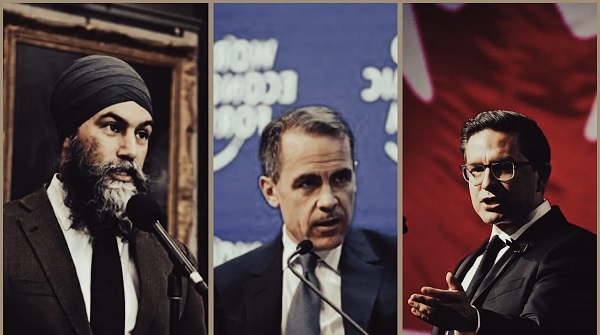Business
Backlash To Woke Corporations

Kid Rock blasts case of bud light
From the Daily Caller News Foundation
It was a warning shot that went unheeded, and now it is costing major corporations dearly. Following a last year’s Supreme Court decision on affirmative action in higher education, 13 Republican state attorneys general fired off a letter to Fortune 100 companies questioning their similar corporate policies. Now, many companies wish they had paid closer attention.
In the past few months, conservative activist Robby Starbuck’s social media campaign has swept through major corporations wreaking so much havoc that companies have begun folding to his demands before they are even targeted. The result? Damaged market capitalizations, tarnished reputations, and ire and frustration from consumers and activists on both the Left and Right. Welcome to the latest manifestation of our post-Bud Light era in which every company remains a Target.

Starbucks’ campaign and the attorneys general’s scrutiny that preceded it are part of the growing right-wing backlash to corporate America’s post-George Floyd embrace of Diversity, Equity, and Inclusion (DEI) practices. It is just one area in which companies are finding it hard to avoid political pressures in today’s stakeholder economy. Here’s what public affairs professionals need to know to help their companies navigate the increasingly heated culture wars of our tribal era.
The Summer DEI Turned Ugly
Leading this charge is conservative activist Robby Starbuck, whose campaigns against corporate DEI efforts have forced several major companies to quietly retreat. He led a full-blown digital assault against Harley-Davidson, leveraging his social media reach to accuse the company of straying from its core, blue-collar values. Harley-Davidson caved, dialing back its diversity programs. Next in line was John Deere, the agricultural giant known for embodying rural America. Starbuck’s campaign amassed millions of views, and the company retreated on its DEI initiatives. Seeing the wreckage, Molson Coors, Ford, and Lowe’s preemptively reduced their diversity efforts to avoid Starbuck’s crosshairs.
These aren’t isolated incidents. What started as a weak signal—the occasional conservative critique—has now turned into a full-fledged backlash. Tractor Supply, for instance, initially embraced DEI as part of a broader modernization strategy, but scaled back its efforts after being targeted by one of Starbuck’s campaigns. The retreat wasn’t driven by internal concerns over DEI’s effectiveness but by external pressures. Starbuck’s use of social media, dripping out just enough content over time to keep the pressure rising, has been a devastatingly effective strategy leaving companies from every sector fearing that staying the DEI course could cost them dearly.
Companies’ Complicated Embrace of DEI
Companies first leaned into DEI as a response to a profound cultural shift. The killing of George Floyd galvanized a movement for racial justice, and businesses, driven by both moral imperatives and strategic necessity, integrated DEI into their operations. Companies like Harley-Davidson, Nike, and John Deere were among the most visible in championing these efforts, aligning their brands with social progress and gaining public praise in the process.
What many of these organizations failed to foresee was the emergence of a powerful counter-narrative. On the surface, DEI seemed apolitical — focused on long-overdue fairness, inclusion, and representation. However, to conservative critics like Robby Starbuck, these initiatives represented a broader ideological shift that encroached on corporate neutrality. Companies that embraced DEI became vulnerable to accusations of wading too far into progressive politics, opening themselves to opposing pressure campaigns that can significantly damage their reputations and business models.
As we’ve pointed out before, DEI efforts are too often shaped and driven by a broader progressive agenda that itself is not always that inclusive. Plus, for many companies, the embrace of DEI has been more rhetoric than results, with little real progress towards stated goals of elevating under-represented populations in company ranks – particularly at higher levels. That’s left companies stuck between unsatisfied progressives and angry conservatives.
In Politics, Every Action Has An Unequal And Opposite Reaction
Starbuck’s playbook reveals a deeper truth about today’s political dynamics. DEI, which quickly became viewed as a corporate best practice, is now seen by many on the right as synonymous with “wokeness” — a label that carries significant risks in today’s polarized environment. What some companies initially saw as distant concerns have turned into high-pressure reputational crises and many prominent libertarian and conservative voices in the business world are now pushing companies to embrace an alternative: Merit, Excellence, and Intelligence (MEI).
This new reality brings significant legal implications, with lawsuits alleging reverse discrimination on the rise and politicians pushing legislative and enforcement actions. Florida Gov. Ron DeSantis spearheaded efforts to dismantle DEI with the “Stop WOKE Act” in 2022, which restricted how race and gender topics are taught in schools and workplaces. In 2023, he expanded these efforts by defunding DEI programs in higher education, labeling them as political indoctrination. His actions set a precedent for other Republican governors, with states like Texas, North Dakota, and North Carolina advancing similar policies.
In many ways, DEI has become a proxy for larger ideological battles, and companies are increasingly caught in the crossfire. As Starbuck’s campaigns continue to gain traction, businesses that once felt pressure to do more on a range of social issues from the left are now feeling the same sort or pressure from the right — and not all of them understand how they got here or what it means as our cultural warfare continues.
Navigating The Tribal Divide
As the stories of Harley-Davidson, John Deere, and Tractor Supply illustrate, the decision to step back from DEI initiatives isn’t always about rejecting diversity itself but about managing the complex realities of political and reputational risk. Even firms like Nike, a well-known and ardent supporter of progressive social causes, has tempered its public messaging in recent months.
The DEI blowback we’re witnessing today is a reflection of deeper societal divisions, ones that are now playing out across corporate America. Public affairs professionals need to understand this battle isn’t just about DEI—it’s about the role activists and politicians on both sides of the divide expect businesses to play in shaping cultural narratives.
In this new era, companies must navigate an ever-shifting landscape where political and cultural allegiances can determine success or failure. For those in government relations and public affairs, staying attuned to these tribal dynamics will be critical in helping organizations anticipate and manage the next wave of blowback—or hopefully avoid it all together.
Jeff Berkowitz is the founder and CEO of Delve, a competitive intelligence and risk advisory firm.
Business
Federal government’s accounting change reduces transparency and accountability
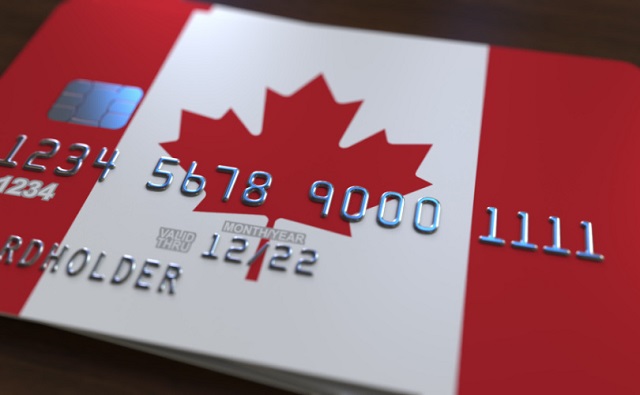
From the Fraser Institute
By Jake Fuss and Grady Munro
Carney’s deficit-spending plan over the next four years dwarfs the plan from Justin Trudeau, the biggest spender (per-person, inflation-adjusted) in Canadian history, and will add many more billions to Canada’s mountain of federal debt. Yet Prime Minister Carney has tried to sell his plan as more responsible than his predecessor’s.
All Canadians should care about government transparency. In Ottawa, the federal government must provide timely and comprehensible reporting on federal finances so Canadians know whether the government is staying true to its promises. And yet, the Carney government’s new spending framework—which increases complexity and ambiguity in the federal budget—will actually reduce transparency and make it harder for Canadians to hold the government accountable.
The government plans to separate federal spending into two budgets: the operating budget and the capital budget. Spending on government salaries, cash transfers to the provinces (for health care, for example) and to people (e.g. Old Age Security) will fall within the operating budget, while spending on “anything that builds an asset” will fall within the capital budget. Prime Minister Carney plans to balance the operating budget by 2028/29 while increasing spending within the capital budget (which will be funded by more borrowing).
According to the Liberal Party platform, this accounting change will “create a more transparent categorization of the expenditure that contributes to capital formation in Canada.” But in reality, it will muddy the waters and make it harder to evaluate the state of federal finances.
First off, the change will make it more difficult to recognize the actual size of the deficit. While the Carney government plans to balance the operating budget by 2028/29, this does not mean it plans to stop borrowing money. In fact, it will continue to borrow to finance increased capital spending, and as a result, after accounting for both operating and capital spending, will increase planned deficits over the next four years by a projected $93.4 billion compared to the Trudeau government’s last spending plan. You read that right—Carney’s deficit-spending plan over the next four years dwarfs the plan from Justin Trudeau, the biggest spender (per-person, inflation-adjusted) in Canadian history, and will add many more billions to Canada’s mountain of federal debt. Yet Prime Minister Carney has tried to sell his plan as more responsible than his predecessor’s.
In addition to obscuring the amount of borrowing, splitting the budget allows the government to get creative with its accounting. Certain types of spending clearly fall into one category or another. For example, salaries for bureaucrats clearly represent day-to-day operations while funding for long-term infrastructure projects are clearly capital investments. But Carney’s definition of “capital spending” remains vague. Instead of limiting this spending category to direct investments in long-term assets such as roads, ports or military equipment, the government will also include in the capital budget new “incentives” that “support the formation of private sector capital (e.g. patents, plants, and technology) or which meaningfully raise private sector productivity.” In other words, corporate welfare.
Indeed, based on the government’s definition of capital spending, government subsidies to corporations—as long as they somehow relate to creating an asset—could potentially land in the same spending category as new infrastructure spending. Not only would this be inaccurate, but this broad definition means the government could potentially balance the operating budget simply by shifting spending over to the capital budget, as opposed to reducing spending. This would add to the debt but allow the government to maneuver under the guise of “responsible” budgeting.
Finally, rather than split federal spending into two budgets, to increase transparency the Carney government could give Canadians a better idea of how their tax dollars are spent by providing additional breakdowns of line items about operating and capital spending within the existing budget framework.
Clearly, Carney’s new spending framework, as laid out in the Liberal election platform, will only further complicate government finances and make it harder for Canadians to hold their government accountable.
Business
Carney poised to dethrone Trudeau as biggest spender in Canadian history

From the Fraser Institute
By Jake Fuss
The Liberals won the federal election partly due to the perception that Prime Minister Mark Carney will move his government back to the political centre and be more responsible with taxpayer dollars. But in fact, according to Carney’s fiscal plan, he doesn’t think Justin Trudeau was spending and borrowing enough.
To recap, the Trudeau government recorded 10 consecutive budget deficits, racked up $1.1 trillion in debt, recorded the six highest spending years (per person, adjusted for inflation) in Canadian history from 2018 to 2023, and last fall projected large deficits (and $400 billion in additional debt) over the next four years including a $42.2 billion deficit this fiscal year.
By contrast, under Carney’s plan, this year’s deficit will increase to a projected $62.4 billion while the combined deficits over the subsequent three years will be $67.7 billion higher than under Trudeau’s plan.
Consequently, the federal debt, and debt interest costs, will rise sharply. Under Trudeau’s plan, federal debt interest would have reached a projected $66.3 billion in 2028/29 compared to $68.7 billion under the new Carney plan. That’s roughly equivalent to what the government will spend on employment insurance (EI), the Canada Child Benefit and $10-a-day daycare combined. More taxpayer dollars will be diverted away from programs and services and towards servicing the debt.
Clearly, Carney plans to be a bigger spender than Justin Trudeau—who was the biggest spender in Canadian history.
On the campaign trail, Carney was creative in attempting to sell this as a responsible fiscal plan. For example, he split operating and capital spending into two separate budgets. According to his plan’s projections, the Carney government will balance the operating budget—which includes bureaucrat salaries, cash transfers (e.g. health-care funding) and benefits (e.g. Old Age Security)—by 2028/29, while borrowing huge sums to substantially increase capital spending, defined by Carney as anything that builds an asset. This is sleight-of-hand budgeting. Tell the audience to look somewhere—in this case, the operating budget—so it ignores what’s happening in the capital budget.
It’s also far from certain Carney will actually balance the operating budget. He’s banking on finding a mysterious $28.0 billion in savings from “increased government productivity.” His plan to use artificial intelligence and amalgamate service delivery will not magically deliver these savings. He’s already said no to cutting the bureaucracy or reducing any cash transfers to the provinces or individuals. With such a large chunk of spending exempt from review, it’s very difficult to see how meaningful cost savings will materialize.
And there’s no plan to pay for Carney’s spending explosion. Due to rising deficits and debt, the bill will come due later and younger generations of Canadians will bear this burden through higher taxes and/or fewer services.
Finally, there’s an obvious parallel between Carney and Trudeau on the inventive language used to justify more spending. According to Carney, his plan is not increasing spending but rather “investing” in the economy. Thus his campaign slogan “Spend less, invest more.” This wording is eerily similar to the 2015 and 2019 Trudeau election platforms, which claimed all new spending measures were merely “investments” that would increase economic growth. Regardless of the phrasing, Carney’s spending increases will produce the same results as under Trudeau—federal finances will continue to deteriorate without any improvement in economic growth. Canadian living standards (measured by per-person GDP) are lower today than they were seven years ago despite a massive increase in federal “investment” during the Trudeau years. Yet Carney, not content to double down on this failed approach, plans to accelerate it.
The numbers don’t lie; Carney’s fiscal plan includes more spending and borrowing than Trudeau’s plan. This will be a fiscal and economic disaster with Canadians paying the price.
-

 Alberta2 days ago
Alberta2 days agoIt’s On! Alberta Challenging Liberals Unconstitutional and Destructive Net-Zero Legislation
-
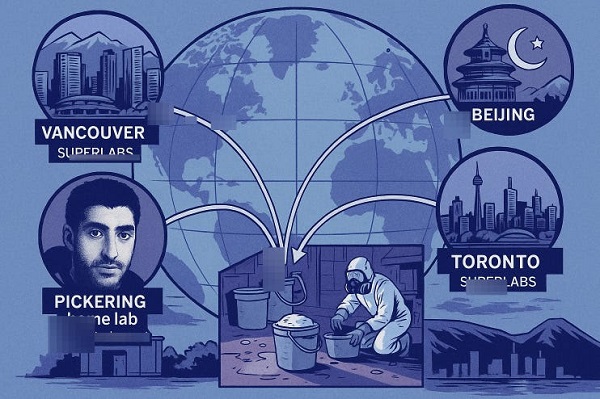
 Crime18 hours ago
Crime18 hours agoCanada Blocked DEA Request to Investigate Massive Toronto Carfentanil Seizure for Terror Links
-
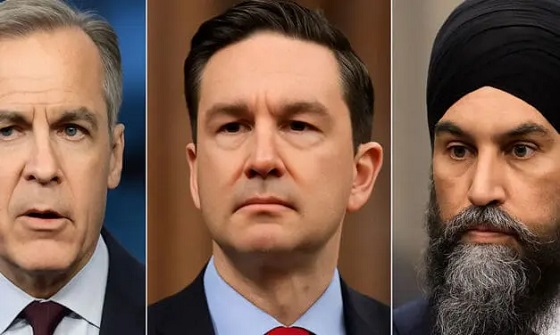
 2025 Federal Election1 day ago
2025 Federal Election1 day agoThe Liberals torched their own agenda just to cling to power
-
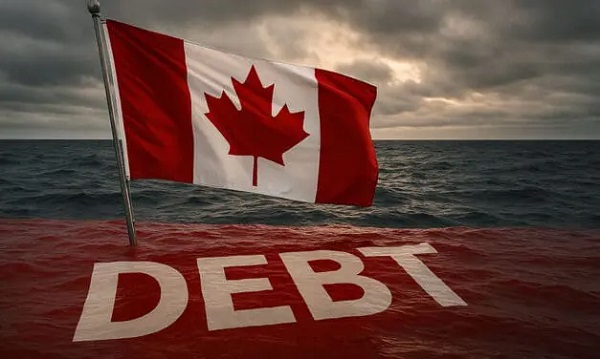
 Business1 day ago
Business1 day agoCanada urgently needs a watchdog for government waste
-
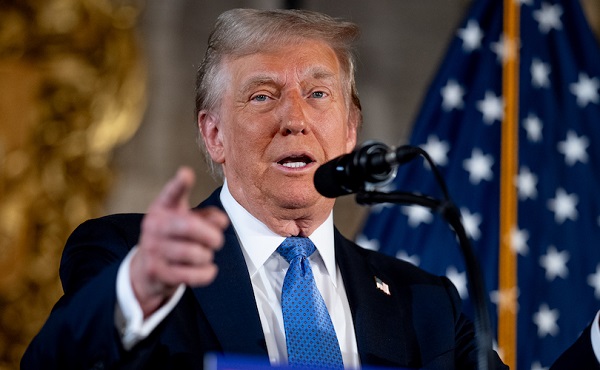
 Business1 day ago
Business1 day agoTrump says he expects ‘great relationship’ with Carney, who ‘hated’ him less than Poilievre
-

 Agriculture2 days ago
Agriculture2 days agoLiberal win puts Canada’s farmers and food supply at risk
-
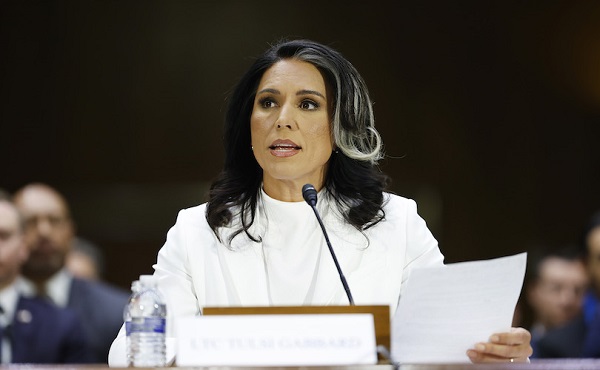
 COVID-199 hours ago
COVID-199 hours agoTulsi Gabbard says US funded ‘gain-of-function’ research at Wuhan lab at heart of COVID ‘leak’
-
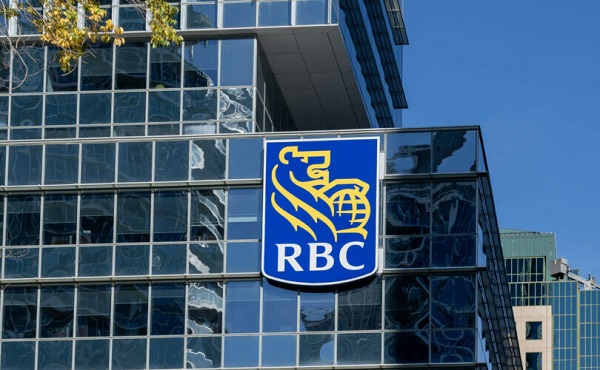
 Business10 hours ago
Business10 hours agoTop Canadian bank ditches UN-backed ‘net zero’ climate goals it helped create





